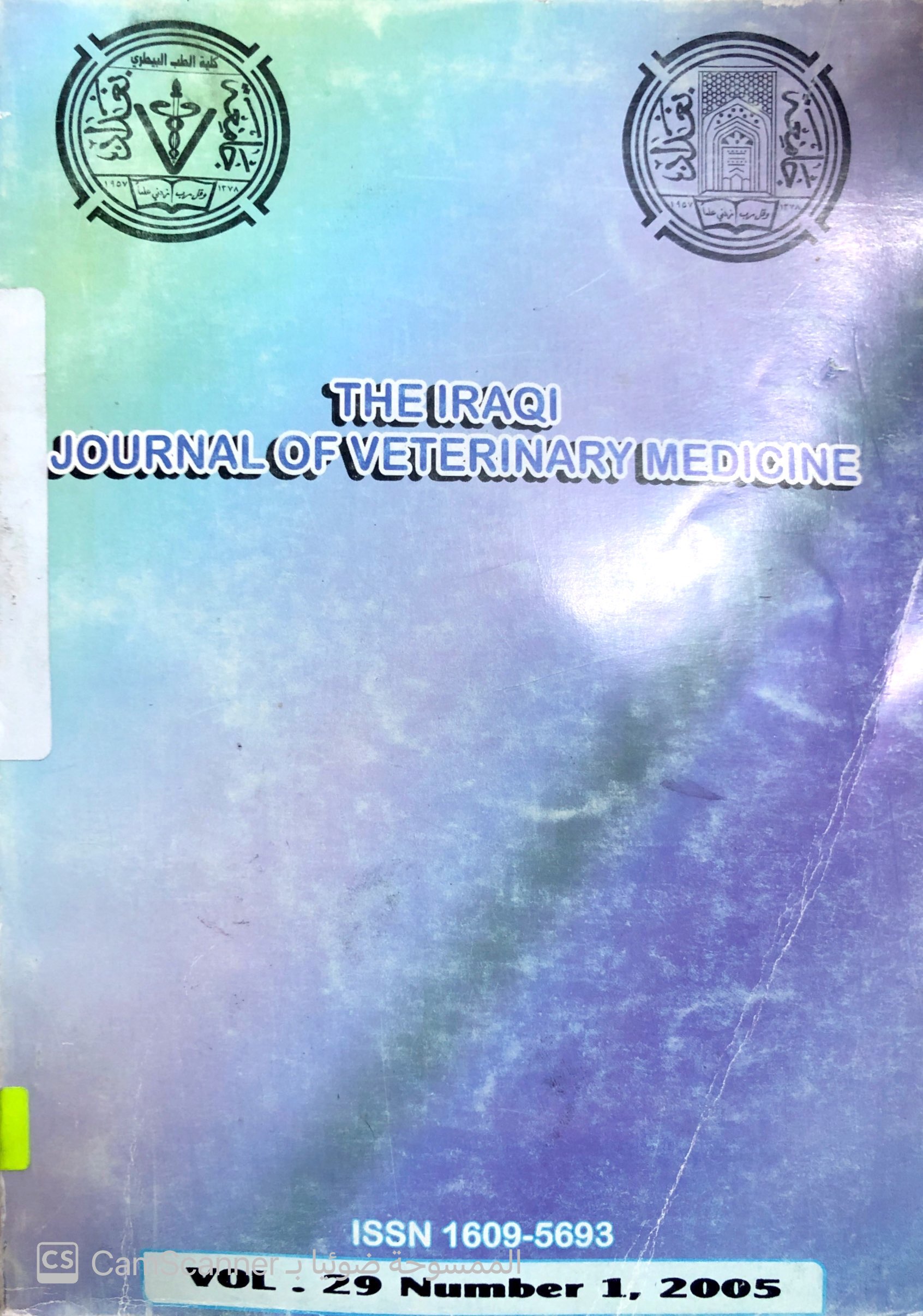The Effect Of Environmental Temperature In The Growth And Development Of Echinococcus granulosus (Batsch1786 Raad Harbi Rahif , Usama Ali Mardan Al-Naimi
Main Article Content
Abstract
The study highligthened on the effect of the field enviromental & controlled
tempratures in the experimental infection with Echinococcus granulosus in
dogs, n = 6 local dogs, at the age of 1.5-3 months, were used . Each dog was
dosed with 8658 protoscoleces with 92.78% viability for 28 and 33 days post
infection (PI). Animals were subdivided into 2groups. Results denoted that the
low enviromental temperatures retarded the growth and development of E.
granulosus.All tapeworms, isolated from the small intestine of dogs housed
under controlled temperatures, with the average of 21.85ºc(group1),had 3
proglottids,whereas those isolated from dogs housed under field temperatures,
with the average of 11.12ºc (group2) ,had only 2 proglottids.The average total
length of E. granulosus ,at the age of 28 days, isolated from
group1,was1.70±0.24mm,longer than those that isolated from group2,with the
average length of 1.13±0.06mm.The average total length of E.granulosus ,at the
age of 33 days , isolated from group 1 and 2 ,was 2.68±0.35 mm and 1.67±0.21,
respectively . Significant statistical differences (p<0.05) were found in the
average total length of E.granulosus isolated from both groups at different ages.
Echinococcus granulosus isolated from group1 were found mature more than
those isolated from group2,and the number of rostellar hooks of the former were
also more than those of the 2nd group, the number of rostellar hooks were, at the
age of 33 days,were34.53±2.19 and29.47±0.62 for the 1st and 2nd gr





